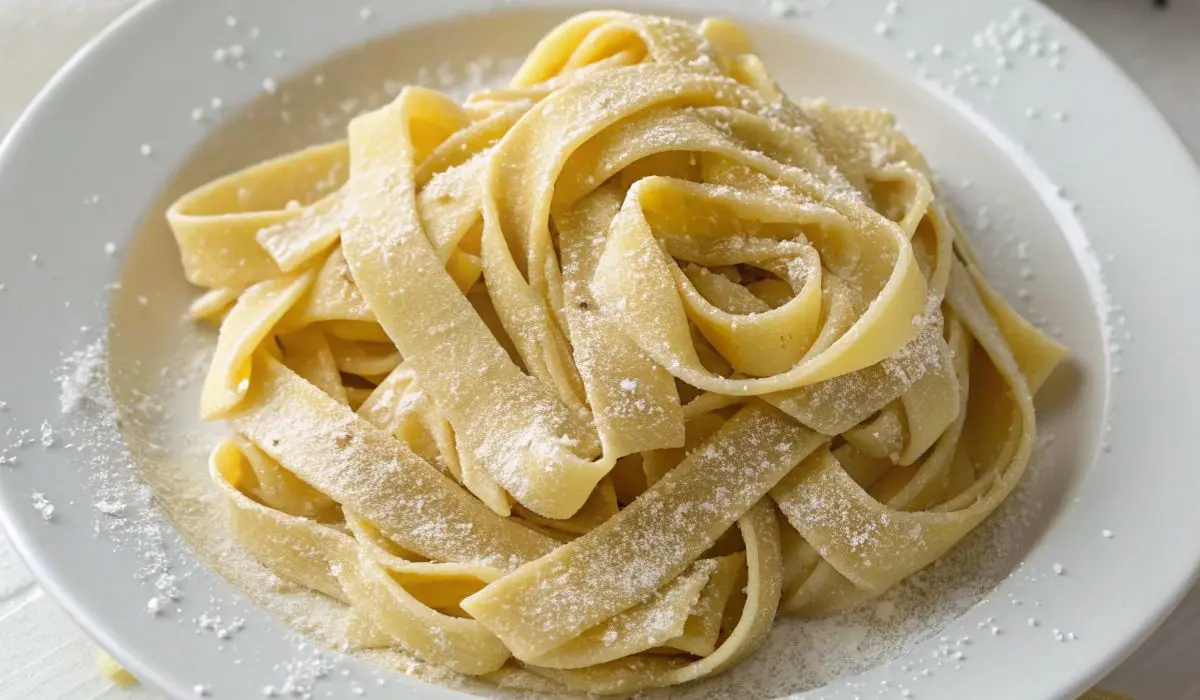Ingredients
Equipment
Method
- Place 2 cups of flour on a clean counter and create a well in the center. Crack 3 eggs into the well and add half a teaspoon of salt and half a tablespoon of olive oil.
- Use a fork to gently beat the eggs while keeping the flour walls intact. Slowly incorporate flour from the edges using your hands. The mixture will look shaggy at first.
- Knead for 8 to 10 minutes. At first, it feels dry and crumbly, but after about 8 minutes, it transforms into something smooth and elastic. Add tiny amounts of water if too dry, or dust with flour if too sticky.
- Wrap the finished dough in plastic wrap and let it rest for 30 minutes at room temperature. This allows the flour to fully hydrate.
- Cut the rested dough into four pieces. Work with one piece at a time, keeping the others covered.
- If you have a pasta maker, flatten each piece slightly and run it through the widest setting three times. Fold the dough in half lengthwise, then continue rolling through progressively narrower settings. Without a pasta maker, use a rolling pin to roll as thin as possible.
- Cut pasta sheets into your preferred shape. Fettuccine and tagliatelle work great for beginners. Dust with flour to prevent sticking.
- Bring a large pot of salted water to a rolling boil. Add your pasta and cook for just 1 to 2 minutes. Fresh pasta is done when it floats to the surface and has a slight bite to it.
Notes
Fresh pasta can be stored in the refrigerator for up to two days. Wrap it well in plastic wrap to prevent drying out. You can also freeze uncooked pasta for up to three months. Just dust it heavily with flour before freezing. Don't add too much flour while kneading - the dough should feel slightly tacky but not sticky. Don't skip the resting time as this step is crucial for workable dough.
